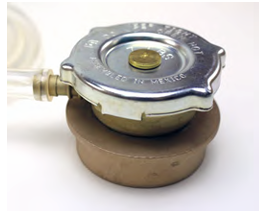grahamdouglass
Senior Member
- Joined
- Nov 29, 2012
- Messages
- 422
- Location
- Canada
- Vessel Name
- Summer Wind 1
- Vessel Make
- Marine Trader 41
I recently changed my water heater, in doing so I introduced air into the freshwater coolant system of my Lehman 120 hp, 2715E engine. I picked up one of those coolant fill kits but all the adapters to the radiator are for automotive. Have any of you found a radiator fill adapter for a coolant kit? Do they stock them on Amazon, I’m having a hard time finding one hear in Vancouver, BC
I’ve been phoning around and the radiator guys just say run it with the cap off and the air should escape no problem. Does this make sense?
I’ve been phoning around and the radiator guys just say run it with the cap off and the air should escape no problem. Does this make sense?
Last edited:

